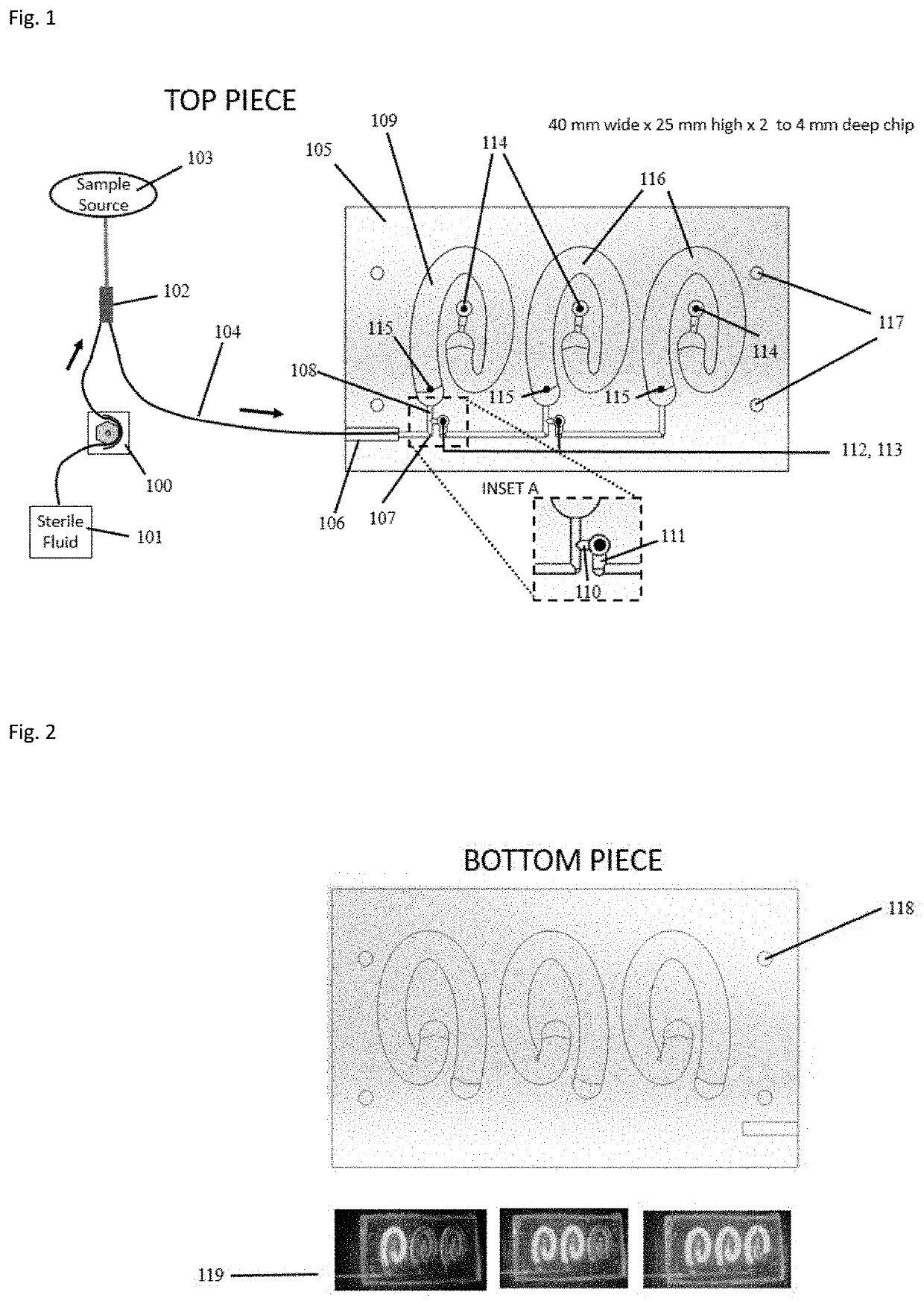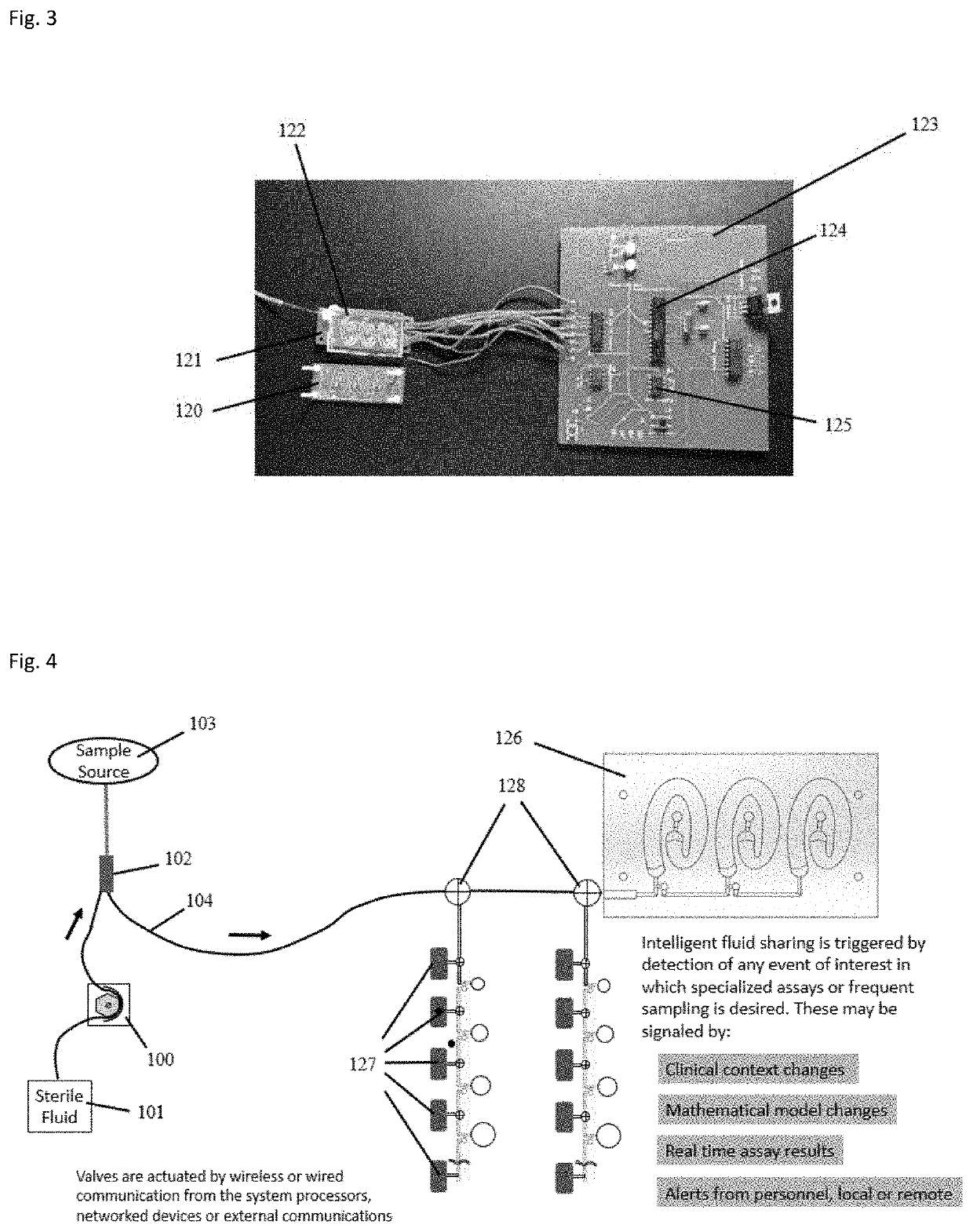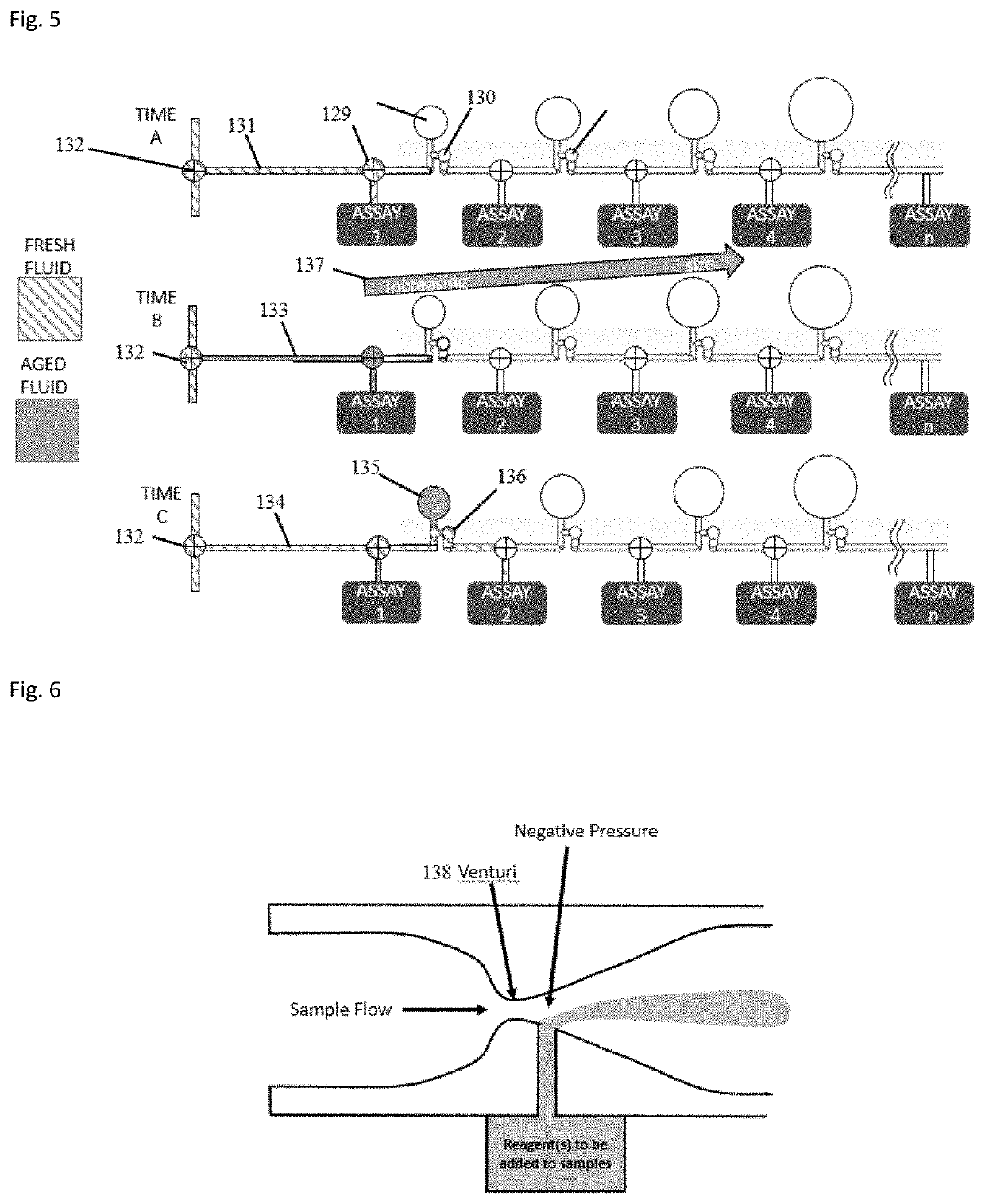Computerized Fluidic System and Methods of Use for Characterization of Molecular Networks in Complex Systems with Automated Sampling, Data Collection, Assays and Data Analytics
a fluidic system and molecular network technology, applied in the field of computerized fluidic system and methods of use for characterization of molecular networks, can solve the problems of inability to develop sufficient numbers of biomarkers, high barriers to innovating better molecular clinical tests, and six biomarker tests routinely useful in critically ill patients
- Summary
- Abstract
- Description
- Claims
- Application Information
AI Technical Summary
Benefits of technology
Problems solved by technology
Method used
Image
Examples
Embodiment Construction
[0029]The system operation starts with sample collection using available methods of sampling to gather “liquid biopsies” of complex systems. For example, well established methods to sample blood, bile, lymph, wounds, tissues and organs and their secretions include microdialysis, iontophoresis, microneedles and open flow microperfusion. Intact fluids are easily sampled, once access is obtained. These include integumentary interstitial fluid, urine, sweat, tears, cerebrospinal fluid (CSF), intraocular fluid, prostatic secretions, lung fluids (sputum, pulmonary edema, hemorrhage), gastrointestinal fluids (saliva, secretions from the esophagus, stomach, biliary system, small and large intestine, pancreas), ascites, pericardial and pleural effusion, joint fluids, and edema fluid from multiple sites. Skin layers (epidermis, dermis, etc.) are particularly accessible because of peripheral location. Non-traditional fluids such as solvated exhaled breath condensate can also be collected. In o...
PUM
| Property | Measurement | Unit |
|---|---|---|
| diameter | aaaaa | aaaaa |
| static water contact angle | aaaaa | aaaaa |
| volume | aaaaa | aaaaa |
Abstract
Description
Claims
Application Information
 Login to View More
Login to View More - R&D
- Intellectual Property
- Life Sciences
- Materials
- Tech Scout
- Unparalleled Data Quality
- Higher Quality Content
- 60% Fewer Hallucinations
Browse by: Latest US Patents, China's latest patents, Technical Efficacy Thesaurus, Application Domain, Technology Topic, Popular Technical Reports.
© 2025 PatSnap. All rights reserved.Legal|Privacy policy|Modern Slavery Act Transparency Statement|Sitemap|About US| Contact US: help@patsnap.com



